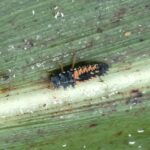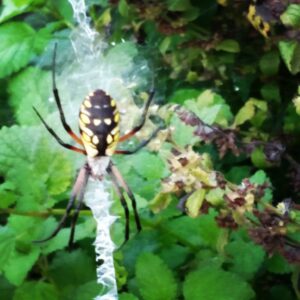Not All Bugs Are Bad
go.ncsu.edu/readext?857108
en Español / em Português
El inglés es el idioma de control de esta página. En la medida en que haya algún conflicto entre la traducción al inglés y la traducción, el inglés prevalece.
Al hacer clic en el enlace de traducción se activa un servicio de traducción gratuito para convertir la página al español. Al igual que con cualquier traducción por Internet, la conversión no es sensible al contexto y puede que no traduzca el texto en su significado original. NC State Extension no garantiza la exactitud del texto traducido. Por favor, tenga en cuenta que algunas aplicaciones y/o servicios pueden no funcionar como se espera cuando se traducen.
Português
Inglês é o idioma de controle desta página. Na medida que haja algum conflito entre o texto original em Inglês e a tradução, o Inglês prevalece.
Ao clicar no link de tradução, um serviço gratuito de tradução será ativado para converter a página para o Português. Como em qualquer tradução pela internet, a conversão não é sensivel ao contexto e pode não ocorrer a tradução para o significado orginal. O serviço de Extensão da Carolina do Norte (NC State Extension) não garante a exatidão do texto traduzido. Por favor, observe que algumas funções ou serviços podem não funcionar como esperado após a tradução.
English
English is the controlling language of this page. To the extent there is any conflict between the English text and the translation, English controls.
Clicking on the translation link activates a free translation service to convert the page to Spanish. As with any Internet translation, the conversion is not context-sensitive and may not translate the text to its original meaning. NC State Extension does not guarantee the accuracy of the translated text. Please note that some applications and/or services may not function as expected when translated.
Collapse ▲ It’s the time of year when plants are coming out of dormancy, but also bugs will be more prevalent as temperatures rise. At the Extension office, we receive many calls about bugs, and the vast majority of insects that people are worried about are NOT bad. A typical backyard contains 1,000 or more different insect species. The vast majority of insects are HARMLESS or even BENEFICIAL. Less than 1% of insects are considered pests.
It’s the time of year when plants are coming out of dormancy, but also bugs will be more prevalent as temperatures rise. At the Extension office, we receive many calls about bugs, and the vast majority of insects that people are worried about are NOT bad. A typical backyard contains 1,000 or more different insect species. The vast majority of insects are HARMLESS or even BENEFICIAL. Less than 1% of insects are considered pests.
So don’t fret when you see an insect in your backyard.
Here are just some examples of good bugs:
Predators
Spiders (technically not an insect, but is a good predator)
Predatory True Bugs
Some of the bad guys:
Sucking Insects
Chewing Insects
Caterpillars
Beetles
If you see a pest, try to identify it before you decide to spray or destroy it. Feel free to send the Extension office a photo (in focus) of the insect.




